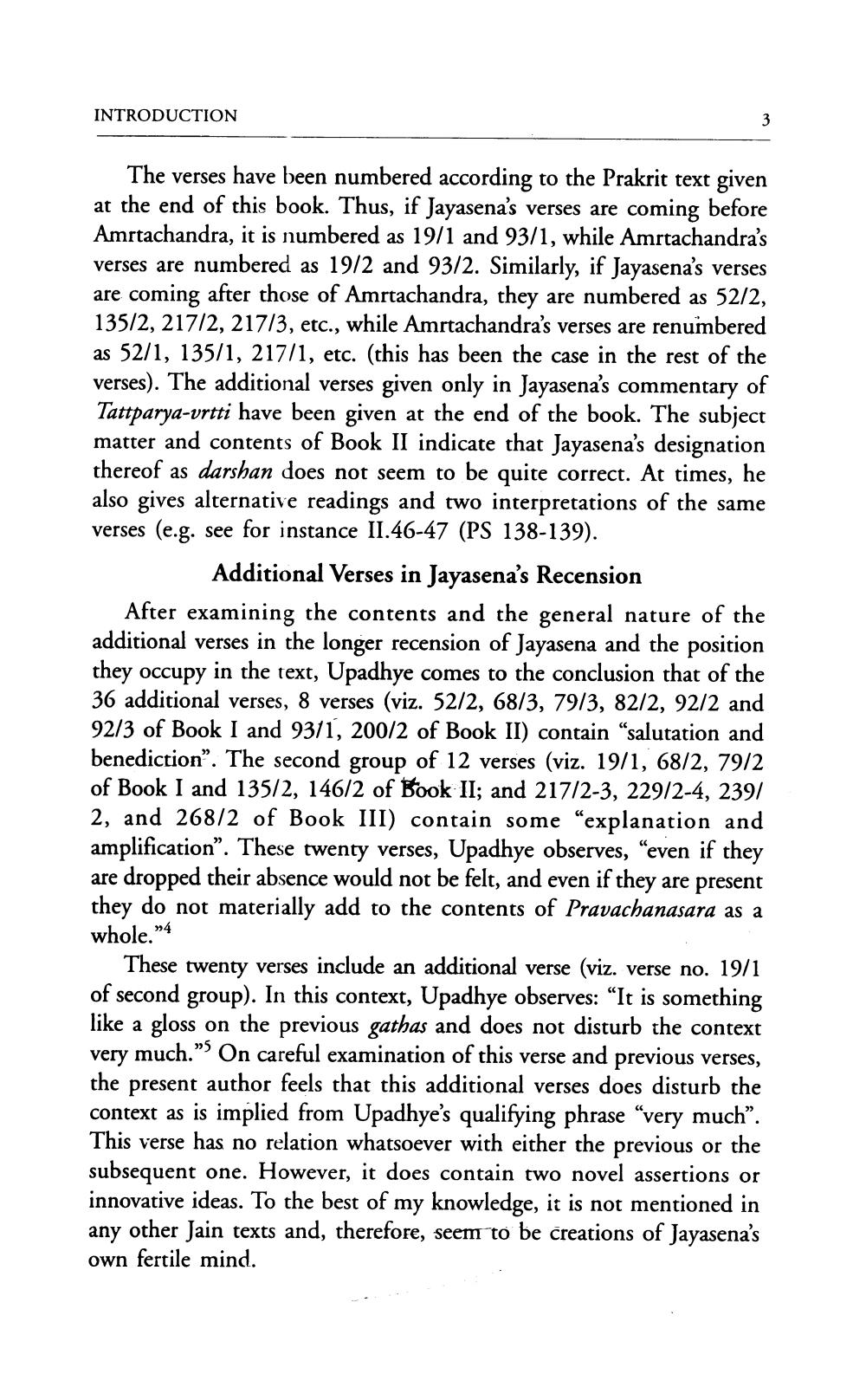________________
INTRODUCTION
The verses have been numbered according to the Prakrit text given at the end of this book. Thus, if Jayasena's verses are coming before Amrtachandra, it is numbered as 19/1 and 93/1, while Amrtachandra's verses are numbered as 19/2 and 93/2. Similarly, if Jayasena's verses are coming after those of Amrtachandra, they are numbered as 52/2, 135/2, 217/2, 217/3, etc., while Amrtachandra's verses are renumbered as 52/1, 135/1, 217/1, etc. (this has been the case in the rest of the verses). The additional verses given only in Jayasena's commentary of Tattparya-vrtti have been given at the end of the book. The subject matter and contents of Book II indicate that Jayasena's designation thereof as darshan does not seem to be quite correct. At times, he also gives alternative readings and two interpretations of the same verses (e.g. see for instance II.46-47 (PS 138-139).
Additional Verses in Jayasena's Recension After examining the contents and the general nature of the additional verses in the longer recension of Jayasena and the position they occupy in the text, Upadhye comes to the conclusion that of the 36 additional verses, 8 verses (viz. 52/2, 68/3, 79/3, 82/2, 92/2 and 92/3 of Book I and 9311, 200/2 of Book II) contain “salutation and benediction”. The second group of 12 verses (viz. 19/1, 68/2, 79/2 of Book I and 135/2, 146/2 of Book II; and 217/2-3, 229/2-4, 239/ 2, and 268/2 of Book III) contain some "explanation and amplification”. These twenty verses, Upadhye observes, “even if they are dropped their absence would not be felt, and even if they are present they do not materially add to the contents of Pravachanasara as a whole.”4
These twenty verses include an additional verse (viz. verse no. 19/1 of second group). In this context, Upadhye observes: “It is something like a gloss on the previous gathas and does not disturb the context very much.” On careful examination of this verse and previous verses, the present author feels that this additional verses does disturb the context as is implied from Upadhye's qualifying phrase "very much”. This verse has no relation whatsoever with either the previous or the subsequent one. However, it does contain two novel assertions or innovative ideas. To the best of my knowledge, it is not mentioned in any other Jain texts and, therefore, seem to be creations of Jayasena's own fertile mind.




